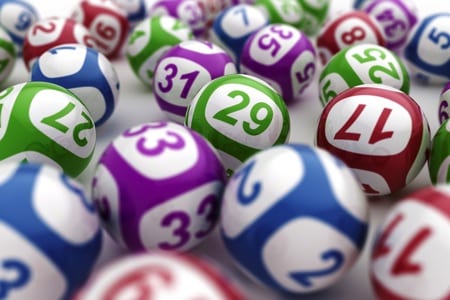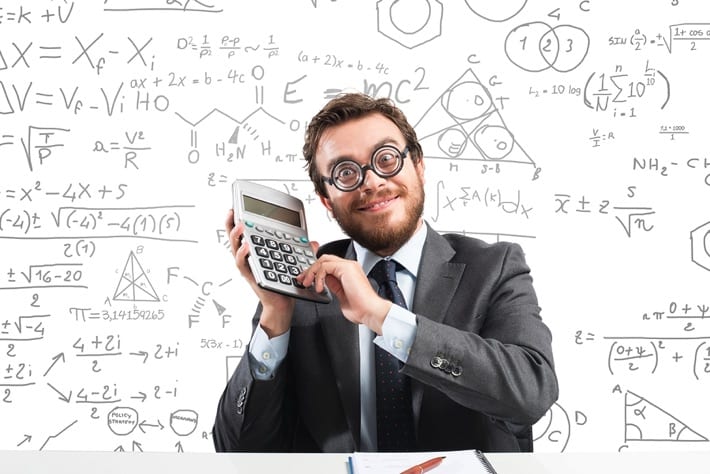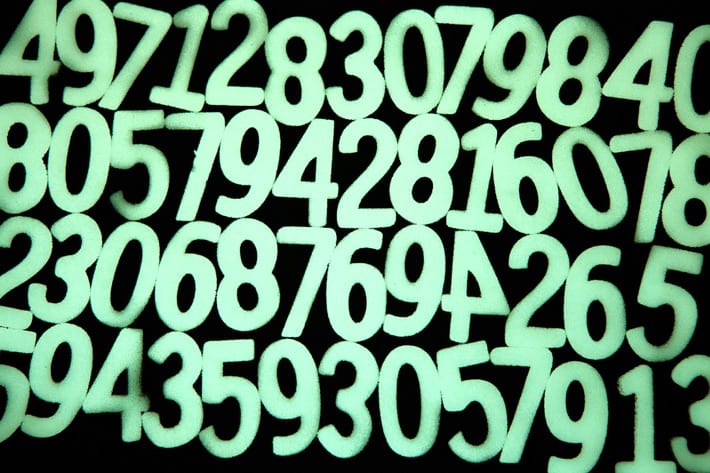 There’s something about the lottery that makes most people abandon their logical senses. Theoretically, there’s no reason why a conservative run of number such as 1, 2, 3, 4, 5 and 6 couldn’t be drawn by the machine, yet there’s no chance that the majority of people would even think about selecting those numbers as their own – logic be damned.
There’s something about the lottery that makes most people abandon their logical senses. Theoretically, there’s no reason why a conservative run of number such as 1, 2, 3, 4, 5 and 6 couldn’t be drawn by the machine, yet there’s no chance that the majority of people would even think about selecting those numbers as their own – logic be damned.
Equally, it’s entirely plausible that consecutive numbers could come out, but we reject it as being illogical for some reason. The truth is that any sequence of six numbers is possible and if we played the lottery for an infinite amount of time they would all come out. It hasn’t been going on infinitely, but it’s being going on long enough for us to be able to look at the most common numbers drawn as of May 2020.
The Logic of the Lottery

Each time that the wheel spins and the balls are mixed up, every number still remaining in the machine has an equal chance of being drawn. The fact that 1 has been drawn doesn’t make 2 coming out next any less likely. The likelihood of the first number drawn being 1 is 1 in 49 for a forty-nine ball draw. The chances of the second number being any of 2, 3, 4, 5 or 6 is then 1 in 48.
This pattern will continue, with the number of possibilities dropping by one each time. So, it is that the third ball fitting the pattern is 1 in 47, the fourth is 1 in 46, the fifth ball is then 1 in 45 and the last ball completing the pattern is 1 in 44. To non-mathematicians, however, it seems completely illogical that it could ever follow such a pattern, despite all balls having the same chance of being drawn.
In a draw in which you need to pick six numbers from a possible forty-nine, there are close to fourteen million possible combinations. The exact figure is 13,983,816, with 1, 2, 3, 4, 5, and 6 being just one of those combinations. As many as ten thousand people play those numbers every time a draw is made, flying in the face of common convention. We want to win, so we see patterns where none exist.
Whilst the lottery in the United Kingdom has now increased to see fifty-nine balls from forty-nine, that only increases the odds rather than changes the logic. Consecutive numbers aren’t less likely than what many of us perceive to be ‘random’ numbers, but we don’t like playing them and there’s an argument to say we shouldn’t anyway.
Picking ‘Random’ Numbers Is Better Anyway
It might well be that you think placing 1, 2, 3, 4, 5 and 6 as your numbers is a clever thing to do, but in actuality, that couldn’t be further from the truth. The fact that the odds of those numbers coming out are the same as any other six numbers might well encourage you to play them, but in doing so you’d actually be reducing your chance of winning a large amount of money.
Given that there are as many as ten thousand people who play those numbers every week, even if you win when the jackpot is relatively large you’ll be having to share it with a large number of people. A £50 million jackpot, split between ten thousand people, would see them take home £5,000 each. That is hardly the sort of amount that you’d want to have considering the pot!
If you’re particularly determined to pick six consecutive numbers, doing so elsewhere from the possibilities would see you likely to win more money than if you simply choose the first six. That would give you the smugness of seeing your consecutive number choice come in, as well as a higher share of the jackpot. Given there’s the same chance of either, it makes complete sense.
There is precedent of seeing people win less money than they expected to. Back in 1995, the jackpot was £16 million. Those that saw their numbers come in would doubtless have been dreaming of new homes, gleaming cars and first-class holidays. Instead, the fact that they’d picked from the central column on offer in the ticket meant that they shared their winnings with others.
In fact, there were 133 people who had picked those numbers, resulting in them each winning £120,300. You can’t predict the numbers in advance, but you can ensure that you tend to pick the less popular numbers, thereby ensuring that you don’t find yourself in the same position of only taking away a small slice of a larger pie and rather get most or all of the pie to yourself.
Looking at the Most Common Numbers

Now that we know both about the logic behind the reason people don’t pick consecutive numbers, as well as the fact that the odds of such numbers coming up are the same as any other set of six numbers, we can turn our attention to the most popular numbers that have been drawn since the first lottery draw, which took place back in November of 1994.
It goes without saying that the numbers change over time, so it’s important to acknowledge that we’re writing this piece on the 25th of May, 2020. By the time you read it, you might well discover that there are other numbers that have become the most commonly drawn, so we’ll have a look at how the most popular numbers drawn have changed over the years.
Let’s start by looking at the most commonly drawn lottery numbers in the Lotto as of May 2020, as well as the number of times they’ve been drawn:
| Number | Amount of Times Drawn |
|---|---|
| 40 | 335 |
| 38 | 327 |
| 30 | 322 |
| 25 | 321 |
| 23 | 332 |
| 11 | 324 |
There are immediately a number of things that stand out from that list, including the fact that none of the six numbers drawn most commonly are within the first ten numbers that are on the list of possible lottery numbers. If you look at the list of the most common unconsecutive numbers, however, you’ll see both 5 and 9 and 8 and 10 being drawn together twenty and nineteen times respectively.
How the Most Common Numbers Have Changed

The numbers in the table above are the most common numbers as of 2020, but have they changed over the years at all? Thankfully, looking at the most commonly drawn numbers is something of a national obsession in the United Kingdom, so we can delve back in time to see what articles journalists wrote about the matter in years gone by.
2014
In an article about the most unusual things bought by lottery winners (a fireworks company, some tarantulas and a narrowboat), the Telegraph’s, Guy Kelly, looked into the matter back in November of 2014. He noted that four consecutive numbers had been drawn three times, including the 13, 23, 24, 25, 26 and 30 draw of 2011.
He also said that the number that had been drawn the most times since the draw began was number 38. The other six most commonly drawn numbers were 23, 25, 31, 33, 43 and 44. The final thing of note in the article was that the least drawn number since the launch of the lottery in 1994 was 13, ‘proving’ many people’s superstition over it.
2016
Two years later and the Independent wrote an article on the matter, as well. It came ahead of a £50 million draw, which was the National Lottery’s largest ever draw at the time. Were the most popular numbers any different two years later? Here’s what the article by the marvellously named Loulla-Mae Eleftheriou-Smith had to say on the matter:
| Number | Amount of Times Drawn |
|---|---|
| 38 | 330 |
| 33 | 324 |
| 31 | 329 |
| 25 | 325 |
| 23 | 332 |
| 11 | 321 |
The article does point out that those were the most popular numbers between the start of the draw in 1994 and the switch to a fifty-nine ball draw in 2015, so it’s interesting to note how the most popular balls changed in only the space of a year. The other thing to remember is just what the shift to a fifty-nine ball game does regarding the most popular numbers.
2018
Perhaps it is written in the newspaper bylaws that an article about the most common numbers in the National Lottery draw has to be written every two years. Regardless, Kemi Ojogbede wrote exactly that piece in April of 2018 for the Daily Mirror. At that point, the draw had been a fifty-nine ball one for two and a half years, though obviously, this didn’t reflect in the change of ‘lucky’ numbers.
Rather than look at the all-time most common numbers, however, the article chose to focus on those that had been drawn the most often ‘over the past couple of years’. It’s an imprecise science, therefore, but it’s still interesting to see which numbers appeared on every list and which ones shifted and changed with the passage of time.
According to Kemi Ojogbede, the following were the most common numbers. The table also shows the number of times each ball had been drawn:
| Number | Amount of Times Drawn |
|---|---|
| 44 | 297 |
| 40 | 306 |
| 38 | 306 |
| 30 | 302 |
| 23 | 306 |
| 11 | 301 |
38, 23 and 11 are the three numbers that appear in both lists, with the three of them also appearing in the list of the most common numbers since the launch of the National Lottery in 1994.
The 59 Ball Era
The move to have fifty-nine balls in the draw instead of forty-nine took place in October of 2015. Though the National Lottery dressed the choice up as one that would see an increase in prize money and more people winning overall, the reality is that they did it because it shifted the odds of winning the jackpot from one in 14 million to one in 45 million.
Not that that changes the number of times lottery balls have been drawn, of course. Thankfully, the same people that keep a note of how often a ball has been drawn also offer information on whether those numbers differ if you only look since the lottery made the move to having fifty-nine balls in the draw. Here’s how the table looks since October 2015:
| Number | Amount of Times Drawn |
|---|---|
| 58 | 62 |
| 55 | 58 |
| 54 | 63 |
| 52 | 62 |
| 42 | 60 |
| 8 | 60 |
It’s fascinating to see that the most frequently drawn numbers since the move to being a fifty-nine ball lottery are all in the high-end of the numbers on offer, with only two of them not being in the fifties. It’s also worth noting that they’re amongst the least selected by punters on account of them being the least sentimental. After all, no one’s day or month of birth will be in the 50s.
For reference, according to a Daily Mirror article from July 2018, the top ten most popular numbers chosen by lottery players around the world were as follows:
- 7
- 9
- 11
- 12
- 13
- 17
- 18
- 19
- 23
- 27
The moral of the story being, if you want the money all to yourself then aim high with your number selection.